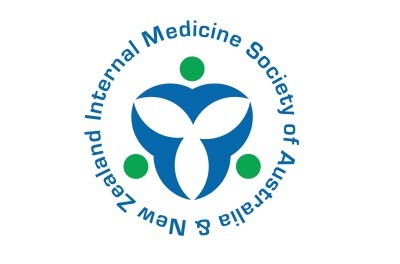Recommendations
Tests, treatments, and procedures for healthcare providers and consumers to question
Australia's peak health professional colleges, societies and associations have developed lists of recommendations of the tests, treatments, and procedures that healthcare providers and consumers should question.
Each recommendation is based on the latest available evidence. Importantly, they are not prescriptive but are intended as guidance to start a conversation about what is appropriate and necessary.
As each situation is unique, healthcare providers and consumers should use the recommendations to collaboratively formulate an appropriate healthcare plan together.
Fever
The Australia and New Zealand Child Neurology Society
Visit page
Following deliberations, the ANZCNS Board determined to investigate the evidence for nine priority recommendations regarding low-value clinical practices in paediatric neurology. An evidence review was developed for these recommendations and served as the basis for an online survey sent to all ANZCNS members asking respondents if they agreed, disagreed or were unsure if these recommendations were evidence based, undertaken in significant numbers, and important in terms of reducing patient harm and unnecessary healthcare expenditure. Based on survey responses, each of the nine was assigned a score and ranked accordingly. Based on this information and a final evidence review, these top 5 recommendations were chosen.
RACP Paediatrics & Child Health Division
Visit page
The Paediatrics & Child Health Division (PCHD) formed a group of interested Fellows to comprise a General Paediatrics EVOLVE Working Group. A review of low-value practices relevant to general paediatrics was conducted drawing on lists published by Choosing Wisely US and Canada, contributions to Choosing Wisely Australia by other medical colleges and published EVOLVE lists developed by other specialties in order to identify low-value practices of relevance while avoiding duplicating the mention of practices already identified in other EVOLVE lists. Based on this review, the Working Group shortlisted 15 items for further consideration.
These 15 items were then reviewed and discussed by participants at a workshop held at the RACP Annual Congress 2016. Following these deliberations, the list was further narrowed down to 10 items. These 10 items were incorporated into an online survey which also summarised the recent evidence on each of these items. A link to the survey was distributed to all Fellows and advanced trainees of the RACP Paediatrics & Child Health Division.
Survey respondents were asked whether they agreed, disagreed or were unsure about whether each item was undertaken in a significant number of paediatric patients, whether there was good evidence that the item should be undertaken less often and whether reducing use of the item was important in terms of reducing harm and/or costs to the healthcare system. Each item was assigned a score based on respondents’ answers to these three questions on each item. There were 269 respondents representing a survey response rate of approximately 22 per cent. The five highest scoring items were selected to be on this ‘top-five’ list.
Internal Medicine Society of Australia and New Zealand
Visit page
A panel of IMSANZ members produced an initial list of 32 low value tests, treatments and management decisions frequently encountered in general medicine services. This initial list was distributed via e-mail to 350 members of a working group comprising approximately 50 general physicians as well as nurses and allied health professionals who ranked the items in terms of priority and were free to nominate additional items. Based on their responses, the list was condensed to 15 items including three which were not previously listed. These 15 items were the subject of a face-to-face forum of the working group which reached consensus on a final list of 10.
Recommendations on ‘what not to do’ were formulated around these 10 items and a summary of the evidence for each recommendation was prepared. An online survey based on this work was presented to, and approved by, IMSANZ Council. The survey was sent to all IMSANZ members asking respondents to assign a score from 1 to 5 for each recommendation on three criteria: ‘The clinical practice being targeted by this recommendation is still being undertaken in significant numbers’; ‘This recommendation is evidence-based’; and ‘This recommendation is important in terms of reducing harm to patients and/or costs to the healthcare system’. The survey attracted 182 respondents from all across Australia and New Zealand, which was a response rate of 26%. The final top five chosen were the recommendations with the five highest average total scores assigned to them.
Australian College of Nursing
Visit page
The Australian College of Nursing (ACN) as nursing lead, established a collaborative working party incorporating a diverse range of nursing expertise. Professional nursing bodies involved in initial collaboration included: Congress of Aboriginal and Torres Strait Islander Nurses and Midwives (CATSINaM); CRANAplus; Australian Primary Health Care Nurses Association (APNA); Australian College of Mental Health Nurses (ACMHN).
ACN’s membership was consulted via publications, web site and ACN’s National Nursing Forum. This consultation provided a broad view from our members regarding planning and delivery of nursing care across Australia. An interactive session invited delegates to actively participate in identifying those nursing practices, interventions, or tests that evidence shows provide no benefit or may even lead to harm. This informative stimulating session examined a range of nursing practices and their effects on healthcare consumers.
At this point specialist nursing groups were approached for comment on our recommendations. This group included: Australasian College for Infection Prevention and Control (ACIPC); Australian Diabetes Educators Association (ADEA); Continence Nurses Society Australia (CNSA); Australian and New Zealand Urological Nurses Society (ANZUNS); Medical Imaging Nurses Association (MINA); and the Australian and New Zealand Orthopaedic Nurses Association (ANZONA). Final consultation with ACN Members and Fellows prior to submission ensured a collaborative result.